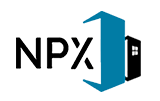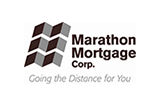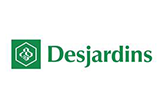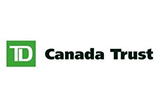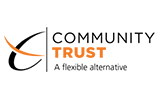For The Mortgage Division to determine your affordability we will need to know your Taxable Income along with the amount of any outstanding debts and the monthly payments. When purchasing your principal residence we will then calculate 32% of your income for use toward a mortgage payment, property taxes and heating costs. If applicable, half of the estimated monthly condominium maintenance fees will also be included in this calculation.
Also The Mortgage Division will calculate 40% of your Taxable Income and deduct all of your monthly debt payments, including car loans, credit cards, and lines of credit payments. The lesser of the first or second calculation will be used to help determine how much of your income may be used towards housing related payments, including your mortgage payment. These calculations are based on Lenders’ usual guidelines.
In addition to considering what the ratios say you can afford, make sure you calculate how much you think you can afford. If the payment amount you are comfortable with is less than 32% of your income you may want to settle for the lower amount rather than stretch yourself financially.
To calculate how much of a mortgage you qualify for contact The Mortgage Division. Call us at 416-621-7501.
When acquiring Mortgages with less than 20% down you must have Mortgage Loan Insurance provided by either the Canadian Mortgage and Housing Corporation (CMHC) or Genworth Canada.
Most times Canadian homebuyers save for a down payment, with certain lenders you could put down as little as 5% of the purchase price which can come from sources other than your own. These lending arrangements are subject to certain restrictions based on income level and credit score.
The 5% down payment can come from borrowed funds such as a line of credit or family member. Keep in mind that the amount borrowed for a down payment is factored into debt service ratios which will establish how much you are eligible to borrow.
The 5% down payment can come from a cash back feature of the mortgage. This will mean that you will have to take the posted rate which is undiscounted required by the lending institution.
In addition to the down payment, according to CMHC and Genworth rules you must have 1.5% of the purchase price available to cover the closing costs including, but not limited to, legal fees and disbursements, appraisal fees and a survey certificate, where applicable.
Mortgage Loan Insurance is insurance provided by Canada Mortgage and Housing Corporation (CMHC), a crown corporation, and Genworth Mortgage Insurance Company, an approved private corporation. This insurance is required by law to insure lenders against default on mortgages with a loan to value ratio greater than 80%. The insurance premiums, ranging from .50% to 3.10%, are paid by the borrower and can be added directly onto the mortgage amount. This is not the same as Mortgage Life Insurance.
Most lenders will accept down payment funds that are a gift from family as an acceptable down payment. A gift letter signed by the donor is usually required to confirm that the funds are a true gift and not a loan. Where the mortgage requires Mortgage Loan Insurance, Canada Mortgage and Housing Corporation requires the gift money to be in the purchaser’s possession before the application is sent in to them for approval.
A pre-approved mortgage should be the first steps a home buyer should take before beginning the buying process.
A pre-approved mortgage provides an interest rate lock guarantee from a lender for a specified period of time about 30 to 90 days and for a set amount of money. The pre-approval is calculated based on information provided by you and is generally subject to certain conditions being met before the mortgage is finalized. Conditions would usually be things like: written employment and income verification and down payment from your own resources.
Many real estate agents will want to make sure you have a pre-approved mortgage in place before they start the home searching process. This is to ensure that they are showing you property within your affordable price limit.
Here are a couple different ways you could reduce the number of years to pay down your mortgage.
- Increasing your payment frequency schedule
- Selecting a non-monthly or accelerated payment schedule, bi-weekly payments.
- Making principal prepayments
- Making Double-Up Payments; if applicable
- Selecting a shorter amortization at renewal.
The RRSP Home Buyers plan is a program that allows first time home buyers to withdraw up to $25,000 (previously $20,000, as of 2009 Federal Budget) from their RRSP towards their first home TAX FREE.
As mentioned above, if you are a first time home buyer, you can withdraw up to $25,000 out of your RRSP tax free! If you are purchasing the home with a spouse, you can both withdraw $25,000 EACH from your accounts. In terms of repayment, you have up to 15 years to pay back your RRSP starting the second year after the year of withdrawal (see CRA). At this time 1/15 of your borrowed amount must be paid back per year.
In terms of penalties, if you don’t repay 1/15 of the borrowed amount per year, you’ll have to add the amount as income. You MUST be a first time home buyer and a resident of Canada at the time of withdrawal. You MUST purchase or build the home before October 1st after the year of withdrawal. RRSP contributions of up to 90 days before the withdrawal date can be used towards the HBP.
This is one of the only ways to withdraw from your RRSP tax free and is a great way to get into the real estate market. Some may argue that you’re missing out on growth on your RRSP while the money is borrowed. However, if you get a good price for your first home relative to others in the neighborhood, the appreciation of the home will hopefully make up for this.
In addition to that, aggressive RRSP contributions after purchasing the home should be part of the plan. For more information you can visit the HBP program in detail at: Home Buyers’ Plan (HBP)





